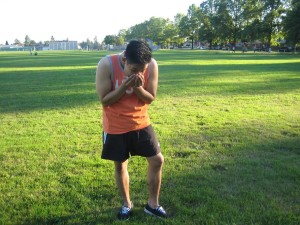Red food dye allergy is a common type of allergy that can trigger an allergic reaction among individuals who ingest it. Even though it is commonly known as a food allergy, it is actually food intolerance since it does not generally cause a true allergic response in the body, but it can occur in some individuals. Due to this, an allergy to red food dye can be difficult to test and diagnose.
Allergies to red food dye is becoming common among children since the dye is typically used on fruit snacks, candies, gum and other treats. There are different types of red food dye in the market. The reactions usually occur after ingestion of foods that contain red food dye No. 40, but reactions can still manifest with any type of red food dye. Take note that this food intolerance can result to a broad range of symptoms ranging from minor to severe and can affect several bodily systems.
Skin symptoms of an allergic reaction to red food dye

If an individual is allergic to red food dye, several skin reactions can occur. After foods that contain red food dye are ingested, a sensitive individual will develop skin redness, rashes, tingling, tightness or itchiness while some develop hives. Individuals who suffer from eczema often notice an increase in breakouts or an increase in the severity of the itchiness and dryness from the current eczema. Oftentimes these reactions are only minor and can go away without any treatment. In some cases, others find relief after taking over-the-counter medications such as Benadryl while other require emergency care to provide relief to the symptoms.
Gastrointestinal symptoms
Gastrointestinal distress is a common reaction to red food dye. Many experience symptoms such as gas, diarrhea or bloating. Some can experience vomiting shortly after eating an item that contains red food dye.
Take note that these symptoms typically last for a short time and are rarely life-threatening. The symptoms usually disappear once the dye passes from the system. On the other hand, continuous exposure to red food dye such as eating red candies regularly can trigger the recurrence of the symptoms and eventually lead to dehydration and fatigue.
Cold and flu-like symptoms
Intolerance to red food dye can cause cold or flu-like symptoms in some individuals. Take note that these symptoms can be often mistaken for cold or seasonal allergies since they cause similar reactions. Once a food that contains red dye is ingested, the individual will experience itchy nose, sneezing, itchy throat and watery eyes.
What happens during severe reactions?
Reactions to red food dye are usually mild and temporary, but for some, the reactions can be more severe and even deadly. Anaphylaxis can trigger the throat to swell, thus blocking the airway. This can eventually lead to shock and even organ failure if not treated right away. If you suspect that an individual experiences reactions to red food dye, it is best to consult a doctor to avoid potential complications.
